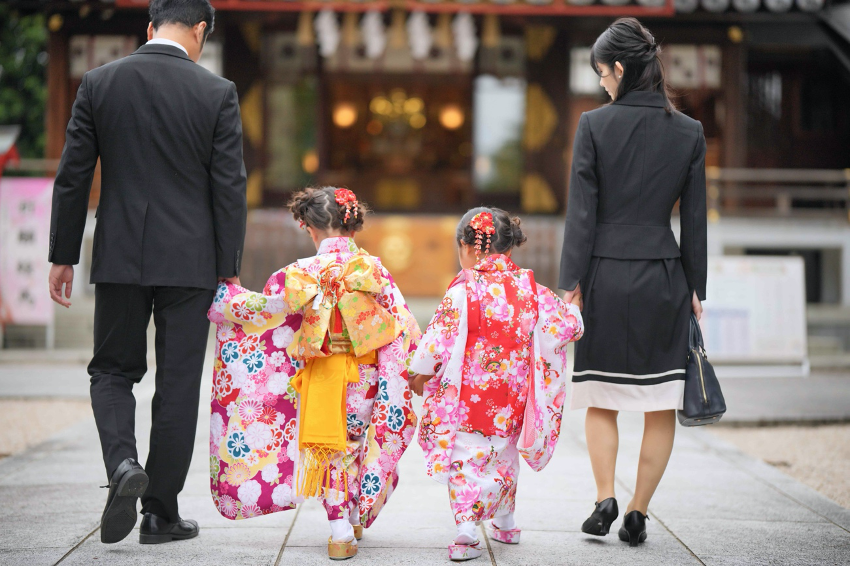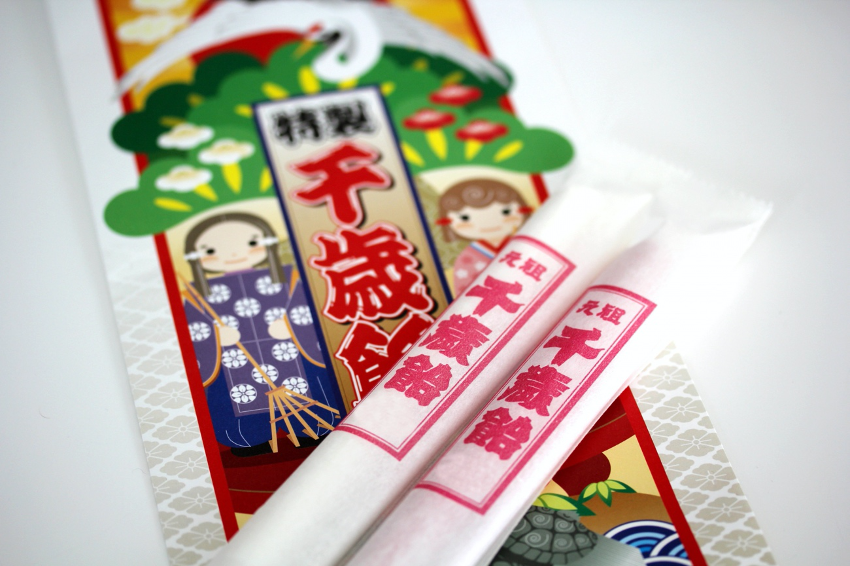Another name for the month of November is "Shimotsuki". November in the lunar calendar corresponds to December in the current calendar, and is said to be named after the onset of frost.
Among the unique customs and events that have been handed down from generation to generation in Japan, one of the most representative traditional events in November is the "Shichi-Go-San" festival. It is one of the most important rites of passage for children, and this article explains the meaning, origin, and celebration of Shichi-Go-San.
What is Shichi-Go-San?
Shichi-Go-San is a traditional Japanese event to celebrate the growth of children at the ages of 3 (San), 5 (Go), and 7 (Shichi). The ages at which the ceremony is held are different for boys and girls, with boys generally celebrating at 3 and 5 and girls at 3 and 7.
The reason for celebrating at odd-numbered ages is influenced by the Chinese philosophical theory of the Yin-Yang Five Elements. According to this theory, odd numbers are considered lucky "yang" numbers and even numbers are considered to be unlucky "yin" numbers. It is believed that in Japan, odd numbers were also respected as auspicious numbers and celebrated as milestones.
In the days before medical care was developed, the mortality rate of children was high, and children up to the age of seven were called "children of God" and were considered to be entrusted to the gods. Shichi-Go-San is an important event to thank the gods and Buddha for the child's safe growth so far and to pray for the child's continued healthy growth.
Shichi-Go-San is celebrated on November 15th, but in modern times, many people celebrate on holidays around this date. Children are dressed in kimono, hakama, suits, dresses, and other formal attire, and everyone has a good time together by visiting shrines and temples, taking family photos, and inviting relatives over for dinner.

Origin of Shichi-Go-San
Shichi-Go-San has its roots in three ceremonies that have been held since the Heian period (794-1185): "Hair Placing Ceremony", "Hakama Dressing Ceremony", and "Obi Untying Ceremony". Today, Shichi-Go-San is recognized as a single event, but it was originally a separate and distinct event for each age group.
Hair Placing Ceremony
During the Heian period, it was believed that shaving one's hair in infancy would ensure healthy hair growth in the future. The Hair Placing Ceremony is a ceremony in which boys and girls who have reached the age of 3 begin to grow their previously shaved hair. A piece of white cotton hair made with white thread is placed on the head, in the hope that the child will live long enough for the hair to turn white.
Hakama Dressing Ceremony
This is a ceremony in which a boy turns 5 and wears hakama, the formal attire of the Heian period, for the first time. Wearing hakama was a sign of becoming a man and a member of society. The child is made to stand on the goban board facing the direction of fortune and pray to the god for his success in the world.
Obi Untying Ceremony
In those days, girls up to early childhood wore kimonos with a string tied around their hips instead of an obi (a kinf of kimono’s belt). In the obi untying ceremony, girls who have reached the age of 7 stop using strings and wear a kimono with an obi tied around it, just like adults. It is a ceremony to celebrate a child's growth from an infant to an adult.
In the Meiji era (1868-1912), these three celebrations were combined and called Shichi-Go-San, a name that has survived to the present day. The persistence of this celebration shows that parents' love for their children has remained unchanged throughout the ages.
Foods associated with Shichi-Go-San
Chitose Ame
Chitose Ame is a food uniquely associated with Shichi-Go-San. The history of Chitose Ame dates back to the Edo period, when candy vendors in Asakusa began selling stick-shaped red and white candies in long bags. Called "1000-years candy" or "Longevity candy" at that time, it became popular because people believed they would live longer if they ate it, and eventually became an indispensable treat for the Shichi-Go-San festival.
Chitose Ame is made by stretching the candy for a long time, so it is believed that parents wish their children to live a long, healthy, and tenacious lives by eating this candy. The bags are also decorated with cranes, turtles, pine trees, bamboo, and plum trees, all of which are good luck charms, giving the candy a festive appearance.
The traditional Chitose Ame given by shrines at Shichi-Go-San is a simple candy made of sugar and corn syrup. The sight of happy children holding a bag of Chitose Ame is adorable, and is the perfect item to bring out the Shichi-Go-San spirit.

Stories related to the four seasons
- January, A Harmonious Family Moment
- February, Demons Out! Fortune In!
- March, Hina Festival for Girls
- April, Cherry blossoms in full bloom
- May, Carp streamers swimming in the sky
- June, Rain falls when plum fruits are ripening
- July, Lovers Meeting across the Milky way on Tanabata
- August, Obon to welcome ancestors back home
- September, Can you see the moon rabbit?
- October, When 8 million deities gather at Izumo Taisha
- November, Shichi-Go-San Festival to celebrate kids' growth
- December, Japanese way of spending Christmas

